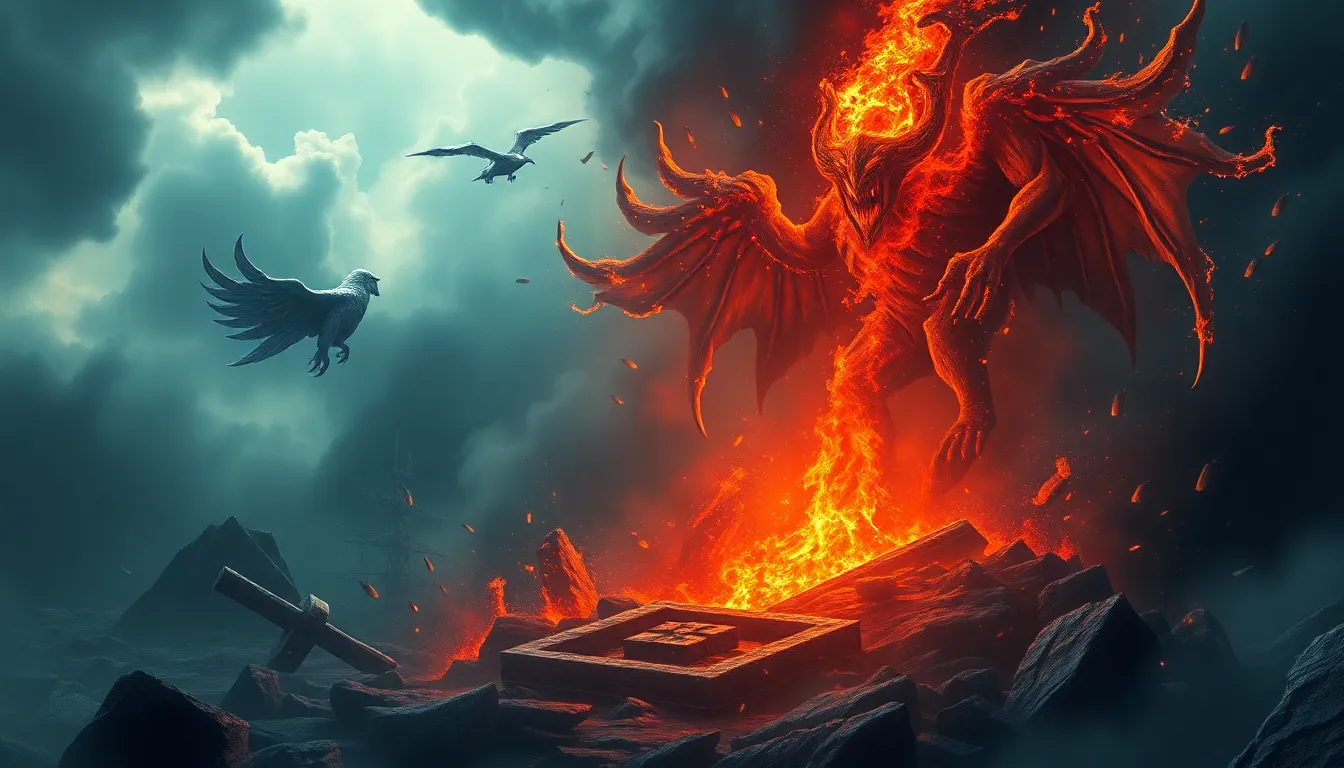The Influence of Nature in Slavic Mythology
Nature played a pivotal role in the beliefs and practices of the ancient Slavs. From the towering forests to the mystical waters, the natural world was imbued with sacredness and believed to be inhabited by supernatural beings. This profound connection with nature shaped Slavic mythology, rituals, and worldview in countless ways.
I. The Role of the Natural World in Slavic Beliefs
For the Slavs, nature was not merely a backdrop but an active participant in their lives. They believed that the forces of nature, such as thunder, lightning, and wind, were manifestations of divine power. Natural phenomena were seen as omens and signs, guiding people's actions and decisions. Moreover, the Slavs believed that nature was interconnected and that harming one element could disrupt the delicate balance of the entire ecosystem.
II. The Sacredness of Trees and Forests
Trees held immense significance in Slavic mythology. They were believed to be the dwelling places of spirits and deities, connecting the heavens and the underworld. Oak trees, in particular, were considered sacred and used in various rituals and ceremonies. Forests were perceived as mystical realms, where nature spirits roamed freely and where humans could communicate with the divine.
III. The Importance of Water Spirits
Water bodies, such as rivers, lakes, and springs, were believed to be inhabited by water spirits. These spirits were both benevolent and malevolent, capable of protecting or harming humans. Water nymphs, known as rusalki, were particularly feared and believed to lure people into the depths. Rivers were also seen as thresholds between the living and the dead, and many funeral rituals involved offerings to the water spirits.
IV. The Significance of Mountains and Stones
Mountains were considered sacred places, home to gods and other supernatural beings. They were often associated with thunder and lightning, and believed to be the source of great power. Stones were also imbued with religious significance. Some stones were believed to possess healing properties, while others were used in divination and rituals.
V. The Belief in Supernatural Beings Associated with Nature
The Slavic pantheon included numerous supernatural beings associated with nature. Leshy, the forest spirit, guarded the animals and trees. Vodyanoy, the water spirit, controlled rivers and lakes. Domovye, the house spirit, protected families and their homes. These beings were believed to interact with humans, influencing their lives in both positive and negative ways.
VI. The Influence of Nature on Slavic Rituals
Slavic rituals and traditions were deeply intertwined with the natural world. Seasonal holidays often coincided with agricultural and astronomical events. The Maslenitsa festival, celebrating the end of winter, involved burning effigies of winter made from straw, representing a purification from evil spirits. Ritual offerings to nature spirits were common, especially to appease Vodyanoy and Leshy.
VII. The Connection between Animals and the Supernatural
Animals played a significant role in Slavic mythology. They were believed to possess supernatural powers and were often associated with specific deities. The raven, for instance, was considered the companion of the god Veles. Wolves were linked to the world of the dead and the underworld. The horse played a crucial role in burial rituals, symbolizing the journey of the deceased.
VIII. The Use of Natural Elements in Slavic Art and Folklore
Nature-inspired motifs permeated Slavic art and folklore. Embroidery designs featured intricate patterns depicting trees, flowers, and animals. Wooden carvings adorned homes and temples with representations of nature spirits. Folk tales and legends were replete with allusions to natural phenomena, reinforcing the interconnectedness of humans and the environment.
IX. The Influence of Nature on Slavic Worldview
The Slavic worldview was fundamentally shaped by the influence of nature. The cycles of seasons, the forces of nature, and the presence of supernatural beings permeated every aspect of their lives. The natural world taught them about life, death, and rebirth. Through their connection with nature, the Slavs developed a unique perspective on existence, emphasizing harmony with the environment and respect for all living things.
X. The Legacy of Nature in Contemporary Slavic Culture
The influence of nature in Slavic mythology continues to resonate in contemporary Slavic culture. Traditional festivals and folklore still incorporate nature-based symbolism. Environmental activism and the preservation of natural heritage hold great importance in Slavic countries. The deep connection between the Slavs and the natural world remains a vital part of their identity and heritage.
FAQ
How did the Slavs view the natural world?
The Slavs regarded nature as sacred and full of supernatural beings and forces. They believed in interconnectedness and that humans were part of the natural cycle.
What were some of the most important nature spirits in Slavic mythology?
Leshy, Vodyanoy, and Domovye were prominent supernatural beings associated with forests, water, and homes, respectively.
How was nature used in Slavic art and folklore?
Nature-inspired motifs were common in embroidery, carvings, folk tales, and legends. These art forms celebrated the beauty of nature and reflected the Slavic reverence for the environment.
What is the legacy of nature in Slavic culture today?
The influence of nature on Slavic mythology can still be seen in traditional festivals, folklore, and environmental consciousness. The deep connection between the Slavs and the natural world persists.




